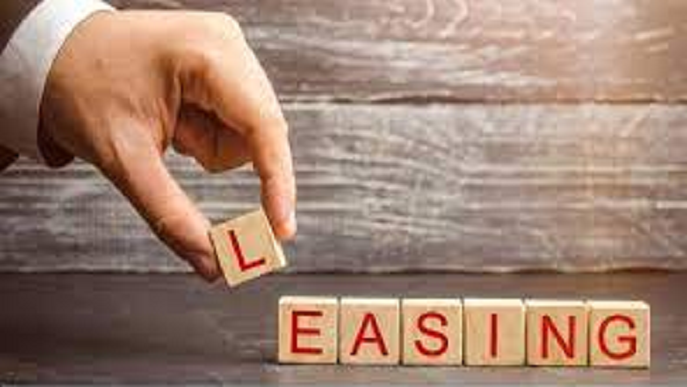A lease is an agreement between two parties, the “lessor” and the “lessee”. The lessor owns a capital asset, but allows the lessee to use it. The lessee makes payments under the terms of the lease to the lessor, for a specified period of time.
Leasing is, therefore, a form of rental. Leased assets have usually been plant and machinery, cars and commercial vehicles, but might also be computers and office equipment. There are two basic forms of lease: “operating leases” and “finance leases”.
Operating leases
Operating leases are rental agreements between the lessor and the lessee whereby:
- a) The lessor supplies the equipment to the lessee
- b) The lessor is responsible for servicing and maintaining the leased equipment
- c) The period of the lease is fairly short, less than the economic life of the asset, so that at the end of the lease agreement, the lessor can either
- i) Lease the equipment to someone else, and obtain a good rent for it, or
ii) sell the equipment secondhand.
Finance leases
Finance leases are lease agreements between the user of the leased asset (the lessee) and a provider of finance (the lessor) for most, or all, of the asset’s expected useful life.
Suppose that a company decides to obtain a company car and finance the acquisition by means of a finance lease. A car dealer will supply the car. A finance house will agree to act as lessor in a finance leasing arrangement, and so will purchase the car from the dealer and lease it to the company. The company will take possession of the car from the car dealer, and make regular payments (monthly, quarterly, six monthly or annually) to the finance house under the terms of the lease.
Other important characteristics of a finance lease:
- a) The lessee is responsible for the upkeep, servicing and maintenance of the asset. The lessor is not involved in this at all.
- b) The lease has a primary period, which covers all or most of the economic life of the asset. At the end of the lease, the lessor would not be able to lease the asset to someone else, as the asset would be worn out. The lessor must, therefore, ensure that the lease payments during the primary period pay for the full cost of the asset as well as providing the lessor with a suitable return on his investment.
- c) It is usual at the end of the primary lease period to allow the lessee to continue to lease the asset for an indefinite secondary period, in return for a very low nominal rent. Alternatively, the lessee might be allowed to sell the asset on the lessor’s behalf (since the lessor is the owner) and to keep most of the sale proceeds, paying only a small percentage (perhaps 10%) to the lessor.
Why might leasing be popular?
The attractions of leases to the supplier of the equipment, the lessee and the lessor are as follows:
- The supplier of the equipment is paid in full at the beginning. The equipment is sold to the lessor, and apart from obligations under guarantees or warranties, the supplier has no further financial concern about the asset.
- The lessor invests finance by purchasing assets from suppliers and makes a return out of the lease payments from the lessee. Provided that a lessor can find lessees willing to pay the amounts he wants to make his return, the lessor can make good profits. He will also get capital allowances on his purchase of the equipment.
- Leasing might be attractive to the lessee:
- i) if the lessee does not have enough cash to pay for the asset, and would have difficulty obtaining a bank loan to buy it, and so has to rent it in one way or another if he is to have the use of it at all; or
- ii) if finance leasing is cheaper than a bank loan. The cost of payments under a loan might exceed the cost of a lease.
Operating leases have further advantages:
- The leased equipment does not need to be shown in the lessee’s published balance sheet, and so the lessee’s balance sheet shows no increase in its gearing ratio.
- The equipment is leased for a shorter period than its expected useful life. In the case of high-technology equipment, if the equipment becomes out-of-date before the end of its expected life, the lessee does not have to keep on using it, and it is the lessor who must bear the risk of having to sell obsolete equipment secondhand.
The lessee will be able to deduct the lease payments in computing his taxable profits.
